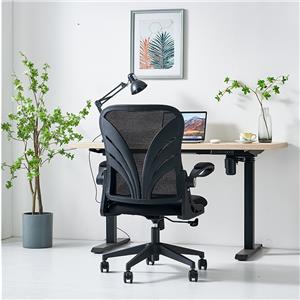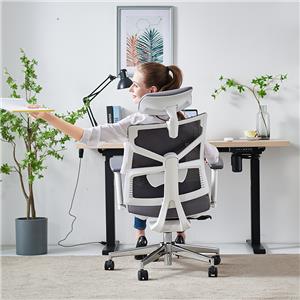Ergonomic chair that meets lunch break needs
In European and American film and television works, we can often see that the office chairs used by foreign workplace workers are different from our domestic chairs. An obvious difference is that foreign office chairs usually do not have headrest designs. In fact, the difference actually stems from the fact that China is one of the few countries that requires a lunch break.
At the beginning of this century, under the leadership of the National Natural Science Foundation of China, the "Research on the Impact of Napping on Work Efficiency" project was officially launched. Among them, in a questionnaire survey on the "popularity of napping", 88% of the Chinese people surveyed had the habit of napping, while only 13% of the Americans surveyed said they "nap frequently." At the same time, the reporter of the British SkyNews in China specifically mentioned in a column that he was surprised by the Chinese people's nap habit when they first arrived. In addition, Indian media has reported on the nap time of Chinese office workers. It is not difficult to see from these surveys and reports that China is indeed a country with few nap habits.
In China, lunch break culture is very popular. For many migrant workers, taking a short nap after lunch can ensure that they can work or study in a full mental state in the afternoon. European and American countries pay more attention to work efficiency. Napping is often seen as a sign of not working hard or lacking motivation, so they do not easily interrupt work to take a nap. According to the "Financial Times" report, until now, most Americans still feel awkward about "sleeping at work". They say that not only do they have a bad impression on bystanders, but it is also difficult for them to sleep peacefully. This is especially common in work-first countries such as Japan and the United States.
Obviously, due to cultural differences in naps, there are also significant differences in the research and development directions of ergonomic chairs at home and abroad. Foreign ergonomic chairs not only lack headrests, but also have different back angles, which also makes many Chinese people give up on the choice of purchasing ergonomic chairs.
Compared with foreign ergonomic chairs without headrest designs, domestic ergonomic chairs are optimized on the basis of foreign models and extended to domestic ergonomic chairs that are more in line with Chinese people's usage habits. For example, in terms of Chinese people’s lunch break habits, Ivyco created NOBEL, which combines work and lunch break functions. It is widely praised by professionals for its 145° recline angle.
Ivyco NOBEL, which fully considers the needs of workers for lunch breaks, has a nearly flat-lying 145° golden elevation angle, mainly due to Ivyco's self-developed adaptive sliding chassis. This chassis is made of fiberglass shrapnel material, which breaks the technical problems of traditional chassis with poor comfort, small recline angle, uneven elasticity, narrow adaptability range, and easy material fatigue, achieving a double leap in comfortable sitting feeling and healthy support. , allowing workers to say goodbye to the frustration of small angles. Paired with the integrated headrest, the head, neck, shoulders and back fit smoothly, and the nap experience is directly enriched.
Waist support can be said to be a point that workers are equally concerned about. Having sufficient lumbar support during the lunch break can make the lunch break more comfortable. At present, most of the ergonomic chairs on the market are based on traditional spring chassis. This type of ergonomic chair with a non-linked chassis makes the user's body slide easily when sitting on it. The fit of the lumbar support is not high, and the waist often hangs in the air. For workers who have to sit for at least 7 hours a day, long-term use can easily lead to lumbar muscle strain.
Therefore, on the basis of developing the chassis, Ivyco also developed its own four-bar linkage mechanism to achieve seat-back movement coordination. When using NOBEL, the user can clearly feel the body's center of gravity changing with the angle during the reclining process. The sports spine support allows the seat cushion and backrest to always fit the body.
At the same time, NOBEL is also equipped with innovative functional designs such as a resilient lumbar support and a hanging chair back, which support the waist and back, greatly releasing the pressure on the workers' backs and making it more suitable for lunch break habits.
Most foreign ergonomic chairs do not have pillow designs and have limited recline angles, which are still unsatisfactory for office workers who need to take a lunch break. The Ivyco NOBEL ergonomic chair, a domestic product that thinks from the perspective of the human body, solves the pain point of workers' head, shoulders and neck not fitting the seat when working or taking a nap through ingenious design. It can be said that owning an Ivyco NOBEL ergonomic chair that combines office work and lunch break is not only a comfortable seating choice, but also a positive investment in the quality of life and physical health.




